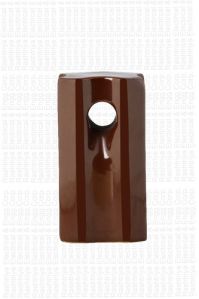
PCB Mounted Insulator
Get Price Quote
We source only qualitative raw material from the reliable places only. Our professionals conduct strict quality checks as a result of which, finished products stand high on the clients' expectations. Our storage facility is installed with all necessary amenities essential for the secure storage of the products. Also, we maintain complete hygiene inside the unit. The PCB Mounted Insulator, delivered by us, are acclaimed for their high-performance and accuracy.

Polymer Insulators
Get Price Quote
Ruled over the market till late second half of the 20th century. The polymeric insulator has a fiber rod structure covered with weather resistant rubbers and fillers and fitted with end fittings. Such a type of insulator is also called composite insulator. The most critical thing to be considered in outdoor insulators is the interface between the solid insulting body and the surrounding air. The problem appears at the interface because it is the interfering point of air and the solid insulator. This problem arises due to the effects of pollution, rain, dust, salt, corona, arcing over surfaces, nitric acid in air, etc. These things increase the leakage current and deteriorate its performance. Surfaces of insulating bodies were therefore coated with glazed material for glass and porcelain insulators, and organic or semi-organic polymer rubbers for composite insulators. A typical composite insulator is composed of a glass fiber reinforced (GFR) epoxy or polyester core (rod), attached with metal end-fittings. This is the load bearing structure. GFR plastics are mechanically very strong but are not able to bear the outdoor environmental effects. The presence of dirt and moisture in combination with electrical stress causes the material to degrade by tracking and erosion. So the rod is covered by a coating that protects it from outside stresses such as rain, salt, fog, pollution, etc. This coating is referred to as housing. A housing material should be able to protect the load-bearing core and provide sufficient pollution with stand. The reason of use of rubbers instead of ordinary plastics is simply the fact that the housing must be flexible enough to follow the changes in dimension caused by temperature or mechanical load. The early developments of modern polymeric insulators started in 1964, and prototypes for field installations started in 1967, and a report from 1996 stated that insulators installed in 1969 were performing well.
Best Deals from Composite Insulator

Porcelain Insulator
Get Price Quote
silicon rubber insulators
Get Price Quote
silicon rubber insulators

Polymers
Get Price Quote
Bottle Shrink Wrapping Machines, High Speed Shrink Wrapping Machine

Polymer Insulators
Get Price Quote
Polymer Insulators, substation clamps, Fire Safety Products

Polymers
Get Price Quote
Yarn, Petrochemical Equipment, Industrial Raw Material

Polymers
Get Price Quote
Paint Thinners

Polymers
Get Price Quote
Surfactants, Solvents, Agrochemicals